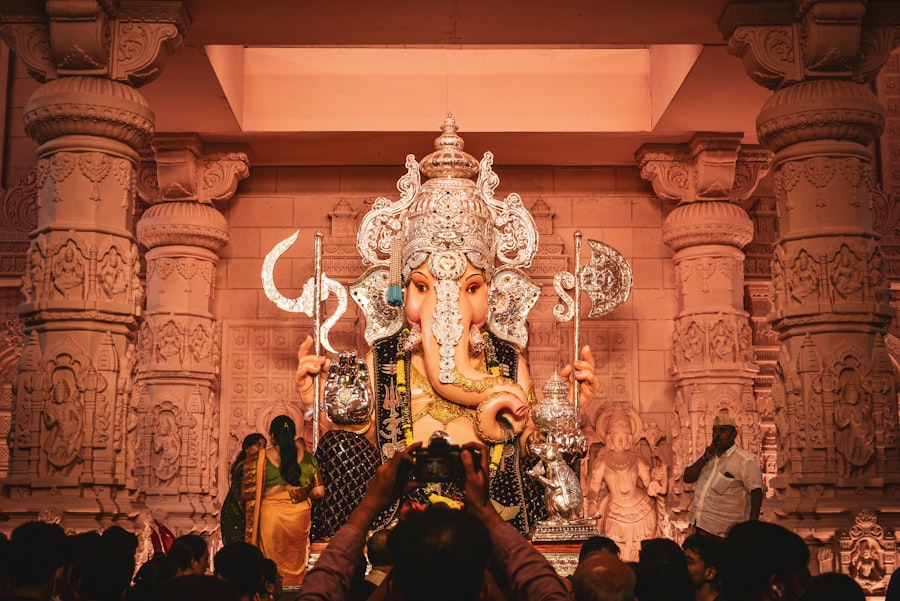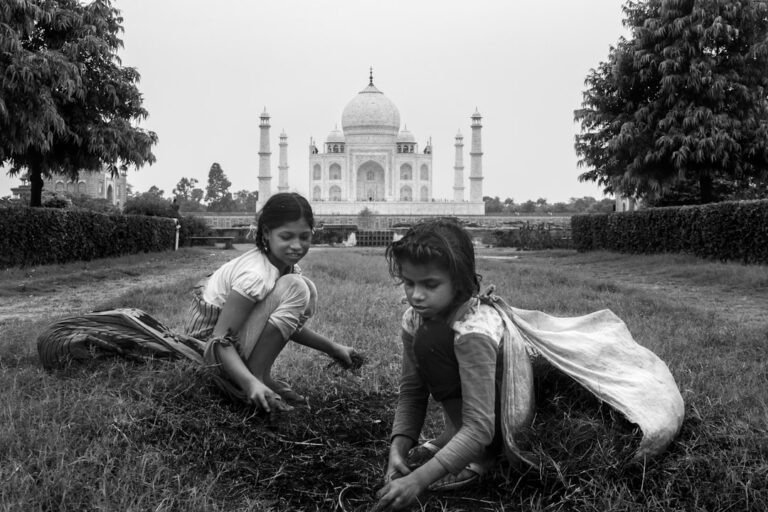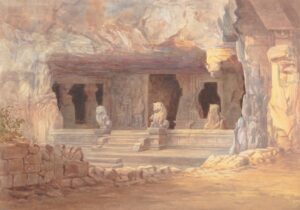The tapestry of early Indian religions is woven with threads of diverse beliefs, practices, and philosophies that have shaped the subcontinent’s spiritual landscape for millennia. The origins of these religions can be traced back to the Indus Valley Civilization, where archaeological findings suggest a complex society with ritualistic practices. As time progressed, these early spiritual expressions evolved into more structured belief systems, notably during the Vedic period, which laid the foundation for what would become Hinduism.
The interplay of various cultural influences, including indigenous traditions and later migrations, contributed to a rich religious milieu that would influence not only India but also neighboring regions. The significance of early Indian religions extends beyond mere belief systems; they encapsulate the philosophical inquiries and existential questions that have preoccupied humanity throughout history. Concepts such as dharma (duty), karma (action and its consequences), and moksha (liberation) emerged during this formative period, providing frameworks for ethical living and spiritual aspirations.
These ideas have permeated various aspects of life in India, influencing art, literature, and social structures. Understanding early Indian religions is crucial for comprehending the complexities of contemporary Indian society and its myriad cultural expressions.
Key Takeaways
- Early Indian religions laid the foundation for the diverse religious and philosophical traditions that emerged in the Indian subcontinent.
- The Pre-Vedic and Vedic periods saw the development of early religious and philosophical ideas that later influenced Hinduism, Buddhism, and Jainism.
- Hinduism evolved from the Vedic traditions and incorporated diverse beliefs, rituals, and practices over time.
- The rise of Buddhism and Jainism provided alternative paths to spiritual liberation and challenged the authority of the Vedic rituals and caste system.
- Early Indian religions had a profound impact on society and culture, shaping art, architecture, literature, and social norms in the Indian subcontinent.
- The influence of early Indian religions continues to be felt in modern India and beyond, with Hinduism, Buddhism, and Jainism remaining significant religious and philosophical traditions.
Pre-Vedic and Vedic Periods
The Enigmatic Indus Valley Civilization
However, much about these early beliefs remains speculative due to the undeciphered script of the Indus Valley.
The Advent of the Vedic Period
With the advent of the Vedic period, a significant transformation occurred in the religious landscape of India. The Vedas, a collection of ancient texts composed in Sanskrit, became the cornerstone of Vedic religion. These texts are divided into four main collections: Rigveda, Samaveda, Yajurveda, and Atharvaveda. The Rigveda, the oldest of the four, consists of hymns dedicated to various deities such as Agni (the fire god) and Indra (the king of gods). Ritual sacrifices, known as yajnas, played a central role in Vedic worship, emphasizing the importance of maintaining cosmic order (rita) through proper rituals.
The Emergence of Philosophical Inquiries
The Vedic period also saw the emergence of philosophical inquiries that would later influence Hindu thought.
Evolution of Hinduism

The evolution of Hinduism is a complex process marked by the synthesis of various cultural and religious influences over centuries. As Vedic traditions began to interact with indigenous beliefs and practices, a more inclusive and diverse religious framework emerged. The Upanishads, composed towards the end of the Vedic period, represent a significant philosophical shift from ritualistic practices to introspective inquiry.
These texts explore profound concepts such as Brahman (the ultimate reality) and Atman (the individual soul), laying the groundwork for later Hindu philosophy. The subsequent development of Hinduism was further enriched by the incorporation of local deities and folk traditions. The Puranas, composed between 300 CE and 1500 CE, played a crucial role in this process by narrating the stories of gods like Vishnu and Shiva while also preserving regional myths and legends.
The Bhakti movement, which gained momentum in medieval India, emphasized personal devotion to a chosen deity and democratized access to spirituality. This movement fostered a sense of community among devotees and encouraged expressions of faith through poetry and music, further diversifying Hindu practices.
Rise of Buddhism and Jainism
The rise of Buddhism and Jainism in the 6th century BCE marked a significant departure from Vedic traditions and introduced new philosophical perspectives that challenged established norms. Siddhartha Gautama, known as the Buddha, sought to address the suffering inherent in human existence through his teachings on the Four Noble Truths and the Eightfold Path. Buddhism emphasized personal experience and meditation as means to attain enlightenment (nirvana), appealing to those disillusioned with ritualistic practices.
Jainism, founded by Mahavira around the same time as Buddhism, also offered an alternative path focused on non-violence (ahimsa) and asceticism. Jains believe in the concept of karma but emphasize strict adherence to non-violence towards all living beings as a means to achieve liberation (moksha). Both religions gained significant followings and contributed to a broader discourse on ethics, morality, and spirituality in ancient India.
Their emphasis on personal responsibility and ethical living resonated with many individuals seeking alternatives to the hierarchical structures prevalent in Vedic society.
Impact of Early Indian Religions on Society and Culture
The impact of early Indian religions on society and culture is profound and multifaceted. The caste system, which emerged during the Vedic period, was deeply intertwined with religious beliefs about purity and social order. While initially based on occupational divisions, it became codified into a rigid hierarchy that influenced social interactions for centuries.
This stratification was justified through religious texts that prescribed specific duties (dharma) for each caste, thereby intertwining social structure with spiritual beliefs. Artistic expressions during this period were also heavily influenced by religious themes. Temples dedicated to various deities became centers of artistic innovation, showcasing intricate sculptures and frescoes that depicted mythological narratives.
The influence of early Indian religions extended beyond architecture; literature flourished with epic texts like the Mahabharata and Ramayana, which not only conveyed moral lessons but also reflected societal values and aspirations. Festivals celebrating deities became integral to community life, fostering social cohesion while providing opportunities for artistic expression through dance, music, and drama.
Continuing Influence of Early Indian Religions

The legacy of early Indian religions continues to resonate in contemporary society, shaping cultural practices and philosophical thought across generations. Hinduism remains one of the world’s major religions, with millions adhering to its diverse beliefs and rituals. The concepts of karma and dharma have transcended religious boundaries, influencing ethical frameworks in various cultures worldwide.
Additionally, festivals such as Diwali and Holi are celebrated not only in India but also among diaspora communities globally, showcasing the enduring appeal of these traditions. Buddhism has also experienced a resurgence in recent years, with its teachings on mindfulness and meditation gaining popularity in Western contexts. The principles espoused by Buddhism regarding compassion and interconnectedness have found relevance in contemporary discussions on mental health and well-being.
Their teachings continue to inspire individuals seeking spiritual fulfillment while providing frameworks for ethical living that resonate across diverse contexts.
The interplay between these ancient belief systems has fostered a rich cultural heritage that remains vibrant in contemporary India and beyond.
If you are interested in exploring the use of herbs and spices for health benefits, you may want to check out this article on managing diabetes with herbs and spices. Just like the evolution of early Indian religions, the use of herbs and spices has a long history and continues to be relevant in modern times for promoting well-being.
FAQs
What are the early Indian religions?
The early Indian religions include Hinduism, Buddhism, Jainism, and Sikhism. These religions have their origins in ancient India and have played a significant role in shaping the religious and cultural landscape of the region.
How did these early Indian religions evolve?
The early Indian religions evolved through a combination of cultural, social, and philosophical influences over time. They were shaped by the teachings of their founders, as well as by interactions with other religious traditions and the changing political and social dynamics of ancient India.
What are the key beliefs and practices of these early Indian religions?
Each of the early Indian religions has its own distinct set of beliefs and practices. Hinduism, for example, is characterized by its belief in karma, dharma, and the cycle of birth and rebirth. Buddhism emphasizes the Four Noble Truths and the Eightfold Path, while Jainism focuses on non-violence (ahimsa) and the concept of karma. Sikhism, on the other hand, emphasizes the importance of meditation, service, and equality.
How did the early Indian religions influence each other?
The early Indian religions influenced each other through interactions, debates, and exchanges of ideas. For example, Buddhism and Jainism emerged as reform movements within the context of Hinduism, and they shared certain philosophical and ethical principles. Additionally, Sikhism was influenced by both Hinduism and Islam, reflecting the religious diversity of the region.
What impact did the early Indian religions have on Indian society and culture?
The early Indian religions have had a profound impact on Indian society and culture. They have shaped religious practices, rituals, art, literature, and social norms. They have also contributed to the development of philosophical and ethical thought in India and beyond. The teachings of these religions continue to influence the lives of millions of people in India and around the world.























+ There are no comments
Add yours